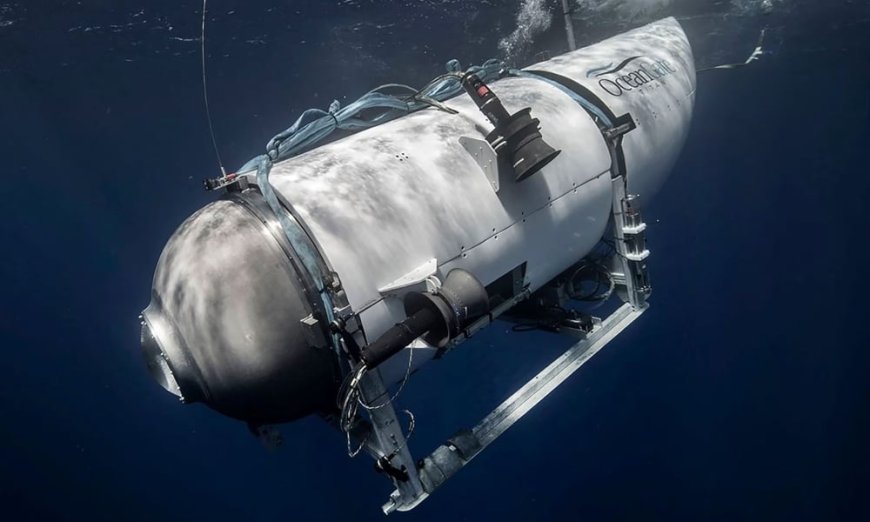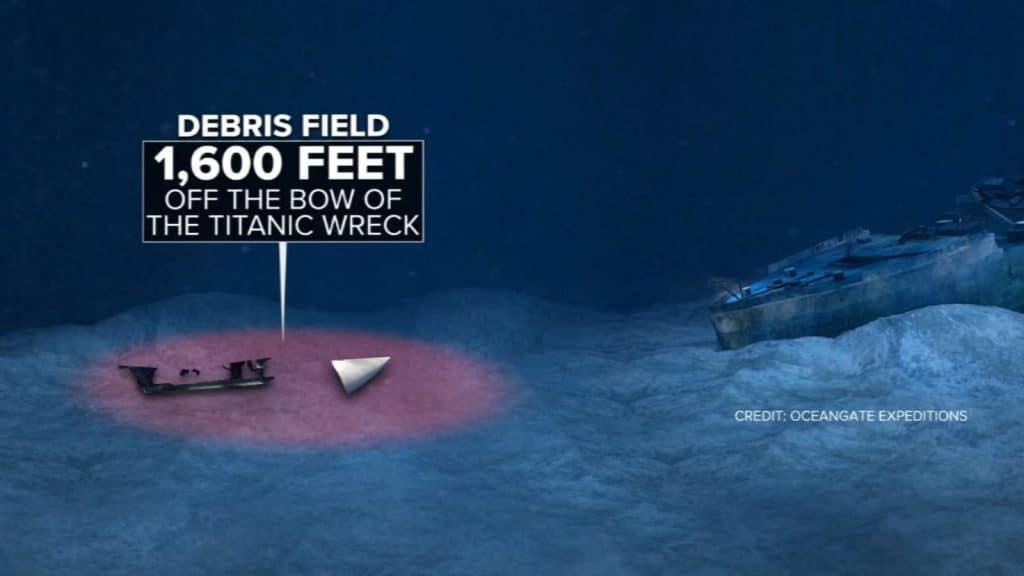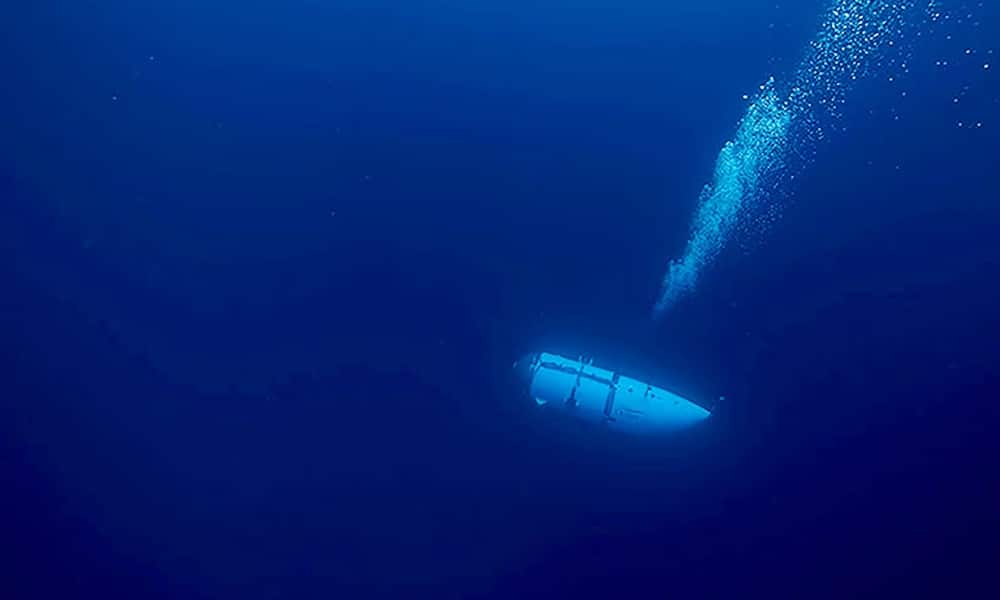What Happens When a Submarine Implodes: The Titan Tragedy
What Happens When a Submarine Implodes? Understanding the Deadly Implications of a Submarine Implosion at Extreme Depths. In the unfathomable depths of the ocean, the weight of water presses down with crushing force. It’s a world where the pressure at 12,000 feet is a colossal 365 times greater than at sea level. A place where […] The post What Happens When a Submarine Implodes: The Titan Tragedy appeared first on Gayety.

Estimated reading time: 13 minutes
Table of contents
- What Happens When a Submarine Implodes? Understanding the Deadly Implications of a Submarine Implosion at Extreme Depths.
- A “Catastrophic Implosion”
- Remembering the Titan Crew
- Inside the Titan Submersible
- Uncovering the Debris of the Titan
- Implosion Evidence and Survivor Hopes
- Titan’s Safety Concerns and Track Record
- The World Watches: The Missing Submersible and the Titanic Legacy
- The Echo of the Titan in Deep-Sea Exploration
- A New Chapter in Oceanic Exploration
- FAQ: Understanding What Happens to a Human When a Submarine Implodes
- More Titan Stories
What Happens When a Submarine Implodes? Understanding the Deadly Implications of a Submarine Implosion at Extreme Depths.
In the unfathomable depths of the ocean, the weight of water presses down with crushing force. It’s a world where the pressure at 12,000 feet is a colossal 365 times greater than at sea level. A place where the unthinkable can happen: a submarine implosion.
A “Catastrophic Implosion”
Tragedy struck the ocean’s depth when the Titan, a submersible vessel, suffered a “devastating implosion”, as described by a U.S. Coast Guard spokesperson. The once-missing submersible was on a daring expedition to the Titanic wreckage, resulting in the loss of all five individuals on board.
The U.S. Navy detected the probable implosion of the missing Titan submarine hours before the U.S. Coast Guard announced it had disappeared. This revelation suggests the five-day search, which attracted constant media attention, may have been in vain from the onset. The Navy identified an anomaly consistent with an implosion in the same area where the Titan vanished. Despite this, the decision was made to continue the search and rescue mission.
The Titan, a Titanic-touring vessel, lost communication less than two hours into its dive, carrying four tourists and a pilot. After an extensive search operation, the submarine’s debris was found on the seafloor, and all aboard were declared dead. The cause of the implosion remains unknown, and there have been recent concerns about the safety record of OceanGate, the company behind the Titan, and the submarine’s ability to withstand deep-sea pressure.
Remembering the Titan Crew
According to the statement from OceanGate Expeditions, the US company that maintained the Titan, the five men on board were passionate adventurers and ocean explorers. The statement conveyed the company’s deep condolences, “Our hearts are with these five souls and every member of their families during this tragic time.”
Inside the Titan Submersible

- The Titan’s hull is constructed from five inches of robust carbon fiber, ensuring its resilience against the immense pressures found at the Titanic wreck depth.
- Equipped with four electric thrusters – a pair for horizontal movement and another for vertical navigation – the Titan is capable of reaching speeds of three knots.
- The pilot maneuvers the Titan using a device reminiscent of a conventional video game controller, bringing a familiar ease to undersea navigation.
- The Titan’s unique weight system enables it to descend as far as 2.4 miles below sea level. When it’s time to ascend, these weights can be discharged, prompting a smooth return to the surface.
- The crew’s toilet facility, albeit divided from the rest of the interior by a mere curtain, offers a breathtaking view through a 21-inch viewport, undoubtedly making for an unparalleled bathroom experience.
- Prior to any expedition, a titanium cap is meticulously bolted onto the Titan’s hull. This procedure guarantees the safety and security of its passengers, effectively sealing them inside until they make their return to the ocean’s surface.
The Titan submersible was equipped with a variety of notable features intended to facilitate deep-sea exploration. Its hull was constructed from five inches of carbon fiber, designed to endure the immense pressures at the depth of the Titanic wreck. It was outfitted with four electric thrusters — two for horizontal motion, two for vertical — which were intended to enable the submersible to reach speeds of up to three knots.
The pilot of the Titan would navigate using a modified video game controller, designed for intuitive control. To manage its depth, the Titan had a weight system that allowed it to sink up to 2.4 miles below the sea level; these weights could be released when it was time to ascend to the surface.
For the crew’s convenience, there was a toilet onboard, separated from the crew area by a simple curtain. This facility offered a unique view through a 21-inch viewport. Safety measures included a titanium cap that was bolted onto the hull before each expedition, sealing the passengers inside until they returned to the surface.
Uncovering the Debris of the Titan
In the early hours of Thursday, an unmanned vehicle, operated from a Canadian vessel, spotted the remains of the Titan. The wreckage was roughly 1,600 feet from the Titanic’s bow, more than two miles beneath the surface in the secluded North Atlantic region, stated U.S. Coast Guard Rear Admiral John Mauger during a press briefing.
“The debris field aligns with a significant implosion of the vehicle,” expressed Mauger. Among the deceased were British billionaire and adventurer Hamish Harding, 58; Shahzada Dawood, 48, a businessman of Pakistani origin and his son Suleman, 19, both British citizens; French oceanographer and Titanic connoisseur Paul-Henri Nargeolet, 77, who had visited the wreck multiple times; and Stockton Rush, the American CEO of OceanGate who was steering the submersible.

Implosion Evidence and Survivor Hopes
Following the Titan’s communication breakdown with its support ship, various international rescue teams had been scouring thousands of square miles of sea with planes and ships for any trace of the 22-foot submersible.
Mauger declared it too soon to pinpoint when the submersible’s malfunction happened. Despite sonar buoys being active for over three days, they did not detect any explosive noises, according to Mauger. Certain sounds picked up on Tuesday and Wednesday sparked momentary hope that the passengers on the Titan were alive and attempting to communicate by striking the hull. However, officials confirmed that the origin of the noises remained uncertain, and they may not have come from the Titan at all. Mauger, on Thursday, shared that the correlation between the noises and the location of the debris field on the sea bed seemed unlikely.
Ocean floor robotic crafts will continue their investigation, Mauger confirmed, though recovery of the bodies might be impossible given the nature of the accident and the extreme conditions at those depths. Officials reported that they found five significant pieces of the Titan, including most of the pressure hull.
Titan’s Safety Concerns and Track Record
By Thursday, hope had started to wane with the 96-hour air supply in the Titan likely exhausted if the vessel had remained intact.
The Titanic, the infamous ship that sank on its maiden voyage in 1912 after striking an iceberg, rests approximately 900 miles east of Cape Cod, Massachusetts, and 400 miles south of St. John’s, Newfoundland. OceanGate has been conducting expeditions to the wreck since 2021, with each journey costing $250,000 per individual, according to OceanGate’s website.
In 2018, the Titan’s safety was questioned at a submersible industry expert symposium and a lawsuit by OceanGate’s former marine operations head, both settled later the same year.

The World Watches: The Missing Submersible and the Titanic Legacy
The extensive search, encompassing more than 10,000 square miles of ocean — roughly the size of Massachusetts — saw the use of two specialized deep-sea unmanned vehicles on Thursday. The perilous conditions at the ocean’s depths, with tremendous pressure and pitch-black darkness, made the mission challenging.
The missing submersible and the subsequent search drew global attention, partly due to the enduring mystique surrounding the Titanic. The supposedly “unsinkable” British passenger liner has been a source of fascination, inspiring both non-fiction and fiction tales for over a century, including the 1997 James Cameron blockbuster that reignited public interest in the story.
The Echo of the Titan in Deep-Sea Exploration
The loss of the Titan and its crew emphasizes the dangers of deep-sea exploration, even with modern technology and safety protocols. As the depth of the search grew, reaching to the abyss of the ocean, the task grew increasingly complicated due to the immense pressure, complete darkness, and vast expanse of the search area.
As for the Titan, its implosion adds a new chapter to the history of deep-sea exploration, serving as a stark reminder of the brutal conditions at those depths. It also underscores the need for rigorous safety measures and protocols, especially as explorers venture into largely uncharted territories of the deep sea.
Despite the tragedy, the spirit of exploration — the same spirit that drove the passengers of the Titan — continues to inspire. Their loss has left a significant impact on the oceanic exploration community, leaving a void that echoes through the dark, cold, and silent world they sought to understand.
The search for the Titanic, a relic of the past, has brought us face to face with the present reality of the risks involved in exploring the world’s last frontier. As investigators continue to unravel the events that led to this tragic incident, the world will be watching, hoping to learn valuable lessons for the future of deep-sea exploration.
In the face of great loss, the spirit of curiosity and discovery continues, undeterred by the unforgiving conditions of the ocean’s depth. It is a poignant reminder that the sea, for all its beauty and mystery, remains a realm that commands respect and caution. As we push the boundaries of human knowledge and capability, the tragic fate of the Titan and its crew will not be forgotten.
A New Chapter in Oceanic Exploration
This incident, coupled with the lasting allure of the Titanic’s story, serves as a potent reminder of the constant interplay between human ambition and the untamed force of nature. It emphasizes the importance of vigilance and respect for the environment we seek to explore, ensuring that the lives lost in this tragic event will continue to enlighten and guide future deep-sea explorations.
FAQ: Understanding What Happens to a Human When a Submarine Implodes
A submarine implosion occurs when the external pressure exerted by deep water becomes too great for the submarine’s structure to handle. This results in the submarine rapidly collapsing or “imploding.”
The exact events may vary, but the primary issues are the immense water pressure and rapid change in pressure. The pressure can cause air-filled spaces in the body to collapse, while rapid pressure changes can lead to decompression sickness. There are also risks of nitrogen narcosis, oxygen toxicity, and hypothermia.
The immediate impact of an implosion at this depth is fatal. The extreme pressure differential would cause the air inside the submarine to heat up rapidly, causing severe burns. The human body would also be subject to traumatic injury due to the sudden change in pressure, resulting in an instantaneous or near-instantaneous death.
Survival is nearly impossible in this scenario. The combination of immediate heat, rapid pressure changes, and the violent nature of an implosion makes it extremely unlikely for anyone to survive.
At such depths, decomposition is slower due to the cold temperatures and lack of oxygen. However, scavenging sea creatures may feed on the remains. Over time, any remaining material is likely to be buried by sediment on the ocean floor.
Decompression sickness, also known as “the bends,” occurs when a person ascends rapidly from high pressure to low pressure. The rapid pressure change causes dissolved gases, mainly nitrogen, in the bloodstream to form bubbles, causing severe joint pain, neurological damage, and potentially death.
Nitrogen narcosis is a condition where high-pressure gases like nitrogen have a narcotic effect, causing a state of mental impairment similar to drunkenness. Oxygen toxicity occurs when the partial pressure of oxygen becomes too high, leading to seizures and other neurological effects.
Deep-sea pressure can have a “crushing” effect on the human body, causing potential tissue and organ damage. Air-filled spaces in the body such as lungs, ears, and sinuses may collapse or fill with body fluids to equalize pressure.
It’s highly unlikely. The combination of immense pressure, rapid pressure changes, potential gas toxicity, and extremely cold temperatures would be fatal to a human exposed to such conditions.
Modern submarines are designed and built to withstand extreme underwater pressure. They have reinforced hulls and special safety features like emergency ascent systems. However, the extreme depths and pressures of the deep sea can still pose serious risks. Regular maintenance, safety checks, and adherence to operational depth limits are crucial to ensure the safety of those onboard.
A submarine implodes when it descends beyond its crush depth, the point at which the hull can no longer withstand the immense water pressure. This pressure imbalance can result from design flaws, equipment malfunction, or human error.
During an implosion, the external pressure becomes too great for the submarine’s structure. The submarine’s hull collapses inward rapidly, releasing an enormous amount of energy. This process occurs in milliseconds and reduces the submarine to a fraction of its original size.
An implosion at extreme depths would be instantly lethal for any people on board. The violent compression and subsequent shock wave leave no room for survival.
Given the rapidity and intensity of an implosion event, survival is virtually impossible. This is why stringent safety measures and operational guidelines are in place for submarine navigation to prevent such occurrences.
Preventing a submarine implosion primarily involves adhering to the vessel’s specified operational parameters, particularly its depth limit. Regular maintenance and checks of the submarine’s integrity, as well as correct responses to emergency situations, are also crucial in preventing implosions.
A submarine implosion releases a massive amount of energy, leading to shock waves that can damage nearby marine life and structures. The resulting debris field can also have a long-lasting impact on the surrounding marine environment.
Given the immediate and violent nature of a submarine implosion at this depth, it’s likely that death would be instantaneous, leaving no time to register pain.
Given the extreme conditions and forces at 13,000 feet underwater, it is highly doubtful that any existing protective gear could significantly increase survival chances during an implosion. The best prevention is stringent safety measures and thorough equipment checks to ensure such an event doesn’t occur.
An explosion is when something bursts out because there’s too much pressure inside. Imagine a balloon popping. An implosion is when something collapses inward because there’s too much pressure outside. Picture a can being crushed. In a submarine, an explosion could happen if there’s a fire or too much gas builds up inside. An implosion could happen if a submarine goes too deep and the water pressure outside is much higher than inside.
The U.S. Navy detected the probable implosion of the missing Titan submarine hours before the U.S. Coast Guard announced it had disappeared on Sunday, June 18, 2023. The Navy identified an anomaly consistent with an implosion in the same area where the Titan vanished. Despite this, the decision was made to continue the search and rescue mission.
More Titan Stories
The post What Happens When a Submarine Implodes: The Titan Tragedy appeared first on Gayety.

 Mark
Mark 





